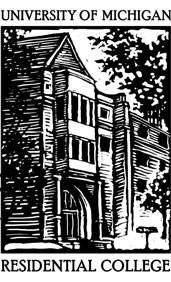
Our whirlwind day in St. Petersburg began at the pinnacle of bygone Russian extravagance and opulence: The Hermitage.


This collection of three million pieces of European artwork collected over the ages was a perfect introduction of the overwhelmingly polarized elements of Russian society. In this museum, many works of the world’s most famous artists are displayed, mostly collected by Catherine the Great at the expense of her citizens. It was simply amazing imagining the functions that
 would have been hosted in this Winter Palace, while at the same
would have been hosted in this Winter Palace, while at the same
From the Gold Room, to the Throne Room, to the main staircase, it was hard to ignore the vast amounts of wealth denied the citizens of this country while the upper elite enjoyed every luxury imaginable. Yet in a very selfish way, after touring the small portion of the entire complex that we could cover in a few hours, I’m very glad that Catherine did so!

After finishing our tour, we had a delicious many-course lunch at a local restaurant, Shtolle, experiencing the wide variety of delicious Russian cuisine that I’m sure we will miss dearly when we return to Ann Arbor. I’m sure that I will be able to give a better summary of the ins and outs of Russian food after our stay in Вытегра, and so I will leave that for another time.
The next part of our day involved sight-seeing many of the 1500 palaces in the city and stopping at cathedrals such as the Church on the Spilled Blood, the site of Alexander II’s assassination pictured on the left.
We then moved to Hare Island to explore the Peter and Paul Fortress, the historic focus of the city. It was amazing to see generations of Russian history represented in such a small area.
 The Sts. Peter and Paul Cathedral is on the island. This ornate cathedral houses the bodies of all of the Russian czars, including Nicholas II and his entire family, who were murdered after the Bolshevik revolution. This revisiting of my many history classes reminded me of the incredible uniqueness of Russian history, and the fact that you can always learn more. For instance, I learned that Catherine the Great was handpicked from a small German village to become the Tsarina, but unexpectedly had an unquenchable thirst for power that led to her arrangement of her husband’s murder and her unprecedented ascension to the throne.
The Sts. Peter and Paul Cathedral is on the island. This ornate cathedral houses the bodies of all of the Russian czars, including Nicholas II and his entire family, who were murdered after the Bolshevik revolution. This revisiting of my many history classes reminded me of the incredible uniqueness of Russian history, and the fact that you can always learn more. For instance, I learned that Catherine the Great was handpicked from a small German village to become the Tsarina, but unexpectedly had an unquenchable thirst for power that led to her arrangement of her husband’s murder and her unprecedented ascension to the throne.
In the theme of cultural dichotomies, we visited the adjacent prison that just happened to house prominent political prisoners like Gorky and Trotsky, who were housed in the cell pictured to the left. It was barren and cold, yet was located right next to arguably one of the most sacred places in the Tsarist era. Surely as our trip goes on – and especially when we experience rural life in Vytegra - these dichotomies will become more evident and more numerous.
Exhausted and jetlagged, we headed home for some food and to prepare for an evening exploring the city, but as we navigated the Russian metro system in broken Russian (and Spanish, French and Polish among others of us), I couldn’t help but consider that the St. Petersburg of today is the equivalent of the aristocracy of past centuries, and that we would soon experience the other side of the socioeconomic dichotomy when we travel to Vytegra tomorrow.


An amazing adventure. I'm sure it will be chock full of memories which you will have to reflect on for a very long time. Good travels to you all.
ReplyDelete